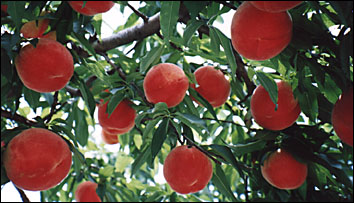Alfred Edersheim, The Life and Times of Jesus the Messiah, pp.298,299
It was, surely, a wondrously linked chain of circumstances, which bound the Synagogue to the Church. Such a result could never have been foreseen, as that, what really was the consequence of Israel’s dispersion, and, therefore, indirectly the punishment of their sin, should become the means of fulfilling Israel’s world-mission. Another instance this, of how Divine judgment always bears in its bosom larger mercy; another illustration how the dying of Israel is ever life to the world; another manifestation of that supernatural Rule of God, in which all is rule, that is, law and order, and all the supernatural, bringing to pass, in the orderly succession of events, what at the outset would have seemed, and really is, miraculous. For the Synagogue became the cradle of the Church. Without it, as indeed without Israel’s dispersion, the Church Universal would, humanly speaking, have been impossible, and the conversion of the Gentiles have required a succession of millenial miracles.

The dying of Israel is ever life to the world. I believe Edersheim makes his case with regard to the synagogue (fruit of the dispersion) and the church. But this principle, as is obvious from the very form of its statement, is also true in other ways. Paul takes up this thought, when thinking of the the Gospel reaching to the Gentiles, and says:
So I ask, did they stumble in order that they might fall? By no means! Rather through their trespass salvation has come to the Gentiles, so as to make Israel jealous. Now if their trespass mean riches for the world, and if their failure mean riches for the Gentiles, how much more will their full inclusion mean! Now I am speaking to you Gentiles. Inasmuch then as I am an apostle to the Gentiles, I magnify my ministry in order somehow to make my fellow Jews jealous, and thus save some of them. For if their rejection means the reconciliation of the world, what will their acceptance mean, but life from the dead? (Romans 11:11-15, ESV)
The dying of Israel is life to the world in that through their trespass salvation has come to the Gentiles. An example of this can be found in the narrative of Acts 13. There Paul and Barnabas have come to Antioch of Pisidia and preached in the synagogue with a good deal of acceptance. However, in view of their popularity the Jews were jealous and opposed Paul. At which point Paul and Barnabas boldly say: It was necessary that the word of God be spoken first to you. Since you thrust it aside and judge yourselves unworthy of eternal life, behold we are turning to the Gentiles For so the Lord has commanded us, saying, �I have made you a light for the Gentiles, that you may bring salvation to thend of the earth.� (Acts 13:46,47: see also Acts 18:6.)
But there is yet another way in which it is true that the dying of Israel is life to the world. It is in connection with the Ideal Israelite, Jesus of Nazareth, the Christ of God. He is called out of Egypt in fulfillment of Hosea 11:1 (Matthew 2:13-15). But Hosea 11:1 is an historical statement relative to the Exodus. Jesus repeated that Exodus, however, that it might be clear that He is the true Israel, the true prince who has power with God and man. The Exodus pointed to Jesus. Isaiah 44 also established that Jesus is the true Israel:
But now hear, O Jacob my servant, Israel whom I have chosen! Thus says the Lord who made you, who formed you from the womb and will help you: Fear not, O Jacob my servant, Jeshurun whom I have chosen. For I will pour water on the thirsty land, and streams on the dry ground; I will pour my Spirit upon your offspring, and my blessing on your descendants. They shall spring up among the grass like willows by the flowing streams. This one will say, ‘I am the Lord’s,’ another will call on the name of Jacob, and another will write on his hand, ‘The Lord’s,’ and name himself by the name of Israel. (Isaiah 44:1-5, ESV)
That this is about Christ is established by the context: for instance, the parallel with Isaish 42:1-9, which Matthew applies to Christ (Matthew 12:15-21). Taking that as a given, then, it is very clearly true that the dying of Israel is life to the world. Jesus died: He is the Lamb of God who takes away the sin of the world; Jesus died: He offered Himself without spot to God; Jesus died: He triumphed over principalities and powers in the cross. Jesus died as the saviour of the world. And so His dying is the life of the world: And the bread that I will give for the life of the world is my flesh (John 6:51). And this dying of the new Israel was also through old Israel’s trespass �as Peter says to the �men of Israel�, this Jesus, delivered up according to the definite plan and foreknowledge of God, you crucified and killed by the hands of lawless men (Acts 4:23).
And that points us to another facet of this truth, something that Paul emphasizes and that is demonstrated clearly in Jesus. Death is not the end of the story. Paul anticipates the acceptance of Israel. They have stumbled, but not in order to fall. Their full inclusion will mean yet greater riches. And Jesus rose from the dead. That was His vindication: in it He was declared to be the Son of God with power (Romans 1:3,4). And His resurrection is for our justification (Romans 4:25). The dying of Israel is ever life to the world. The dying of Israel is always in connection with transgression. But the dying of Israel results in resurrection: and the resurrection of Israel is ever the inauguration of the unimaginable fullness of blessing.








